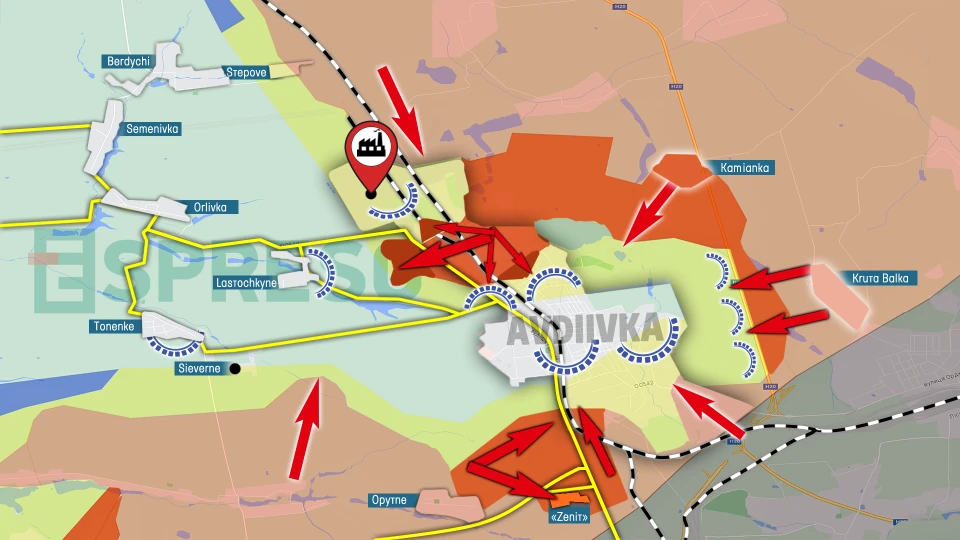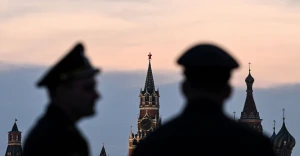
Ukraine introduces new trend for downed Russian planes. Serhiy Zgurets column
New trends are appearing on the battlefield. The Air Force of the Ukrainian Armed Forces carries out methodical work on the destruction of Russian tactical aviation
Russian aircraft face 'Anti-Access Zone'
There are new developments on the battlefield. The Ukrainian Armed Forces' Air Force is systematically targeting Russian tactical aviation. On February 19, two more enemy aircraft, a Su-34 front-line bomber, and a Su-35 fighter, were successfully intercepted and destroyed over Mariupol in the eastern direction, as reported by the Air Force command. Notably, one of the Su-34 crew members ejected 60 km from the front line, while the Su-35 fell 80 km away.
This marks a significant trend as, in the past two days alone, the enemy has lost a total of six planes. On February 18, a Su-34 was destroyed in the morning at the Eastern Air Command. The day before yesterday, on February 17, three enemy aircraft – two Su-34s and one Su-35 – met the same fate in the same direction. Impressively, these incidents occurred at varying, yet considerable distances from the front line, with one falling at a distance of 120 km. The enemy employed these aircraft, particularly the Su-34, to drop bombs equipped with the universal planning and correction module. This technology extends the range of conventional bombs to approximately 70 km. For a considerable period, the invaders felt a sense of impunity while using these weapons against our forces.
The Ukrainian Air Force is implementing the NATO concept known as the "Anti-Access Zone," using long-range air defense capabilities to create a zone where the enemy faces significant challenges in entering and conducting operations without sustaining losses.
The exact method of neutralizing these Russian planes remains somewhat mysterious. Many speculate that the most probable option is the "wandering Patriot," an American air defense system that effectively engages enemy targets from an ambush, displaying considerable mobility – a feature not commonly associated with the Patriot system. It's worth noting that the Patriot missile complex has a destruction range of approximately 150 km for these high-altitude aerodynamic targets. This capability enables the interception of Russian aircraft attempting to deploy bombs on Ukrainian positions.
Several planes were downed in the vicinity of ongoing hostilities around Avdiivka. The use of glide bombs was one element the enemy sought to leverage for their advantage, alongside troop strength and artillery. This advantage, in particular, made our units withdraw from the Avdiivka area.
Avdiivka front update
To seize Avdiivka, the enemy spent four months amassing significant forces, including two armies and a first army corps – totaling over 12 brigades, alongside Russian special operations forces, GRU units, and "Veteran" units. These combined forces, exceeding 40,000 personnel, relentlessly pressed our defenses.

In terms of losses, our impact on the enemy has been substantial. According to the operational-strategic group of troops "Tavria," over the past four months, we've inflicted significant damage – 47,000 Russian soldiers, including casualties and wounded, and the destruction of 1,100 tanks and AFVs. These figures underscore the immense toll on the enemy.
Avdiivka's defense involved several of our brigades and units of the Security and Defense Forces, outnumbered by the enemy. Special acknowledgment goes to the 110th brigade, stationed in the area for two years, steadfastly defending Avdiivka. The 47th and 53rd brigades also played pivotal roles in safeguarding Avdiivka from different directions. Alongside them, various units held off prolonged Russian attacks, showcasing commendable resilience and determination.
The critical situation started on February 14 when the enemy aggressively advanced toward the Coke Plant. By February 15, it became evident that the enemy had crossed the main road crucial for our logistics in Avdiivka. On that day, units of the 3rd separate assault brigade arrived, making significant efforts to stabilize the situation, engage in combat operations, and create conditions for our troops to retreat from the east and south. They played a crucial role in facilitating a well-managed withdrawal despite the advancing enemy. Military personnel acknowledge the restrained, correct, and rational execution of the troop withdrawal, maintaining command structure and combat readiness.
Mykola Volokhov, commander of the aerial reconnaissance unit "Terra" within the 3rd separate assault brigade, emphasized that while he previously considered the Bakhmut direction as the most intense, the situation in Avdiivka has become even more challenging. Avdiivka saw a higher concentration of enemy forces, including elite troops, special forces, and GRU units carrying out night operations. The enemy extensively used prohibited ammunition and guided aerial bombs. Despite their attempts to advance, the Russians face difficulties in their progression.
Mykola Volokhov highlighted that our defenders achieved a personal record for enemy manpower and armored vehicle destruction in a single day, notably eliminating a substantial number of enemy infantry. As the 3rd brigade approached Avdiivka, approximately 4,000 Russian army infantry and over 100 armored vehicles were neutralized within a very short timeframe.
The serviceman underscored the remarkable efforts of the 1st and 2nd assault battalions, the 1st and 2nd mechanized battalions, the anti-tank battalion, and the tank crew of the 3rd brigade. They displayed extraordinary bravery by executing a feat while entering and exiting Avdiivka, providing cover for the maneuvers of our other forces. Despite the heightened risks and potential for greater losses, these two consecutive operations were executed with exceptional professionalism and heroism, even though the fighters were fatigued.
Volokhov pointed out that, according to the FPV operators' calculations, the daily ammunition consumption rate has notably risen. In the Bakhmut direction, they used to employ 10 drones per day with various ammunition types and had 5 reserve drones for commanders. However, in the Avdiivka direction, the drone usage surged to 40 on certain days. Although their unit was better equipped with radio communication in Avdiivka than in Bakhmut, they still faced challenges posed by the enemy's electronic warfare tools. The need for numerous drones is crucial. Losing a few shouldn't hinder the group's ability to fulfill tasks, ensuring continuous nighttime strikes on enemy fortifications, equipment, and infantry, preventing them from regaining strength and easing pressure on our infantry.
The officer concluded that the paramount goal is preserving the lives of friends and comrades across all units fighting alongside the 3rd brigade. To secure victory, staying alive comes first. Secondarily, the mission is to annihilate the enemy.
- News














































